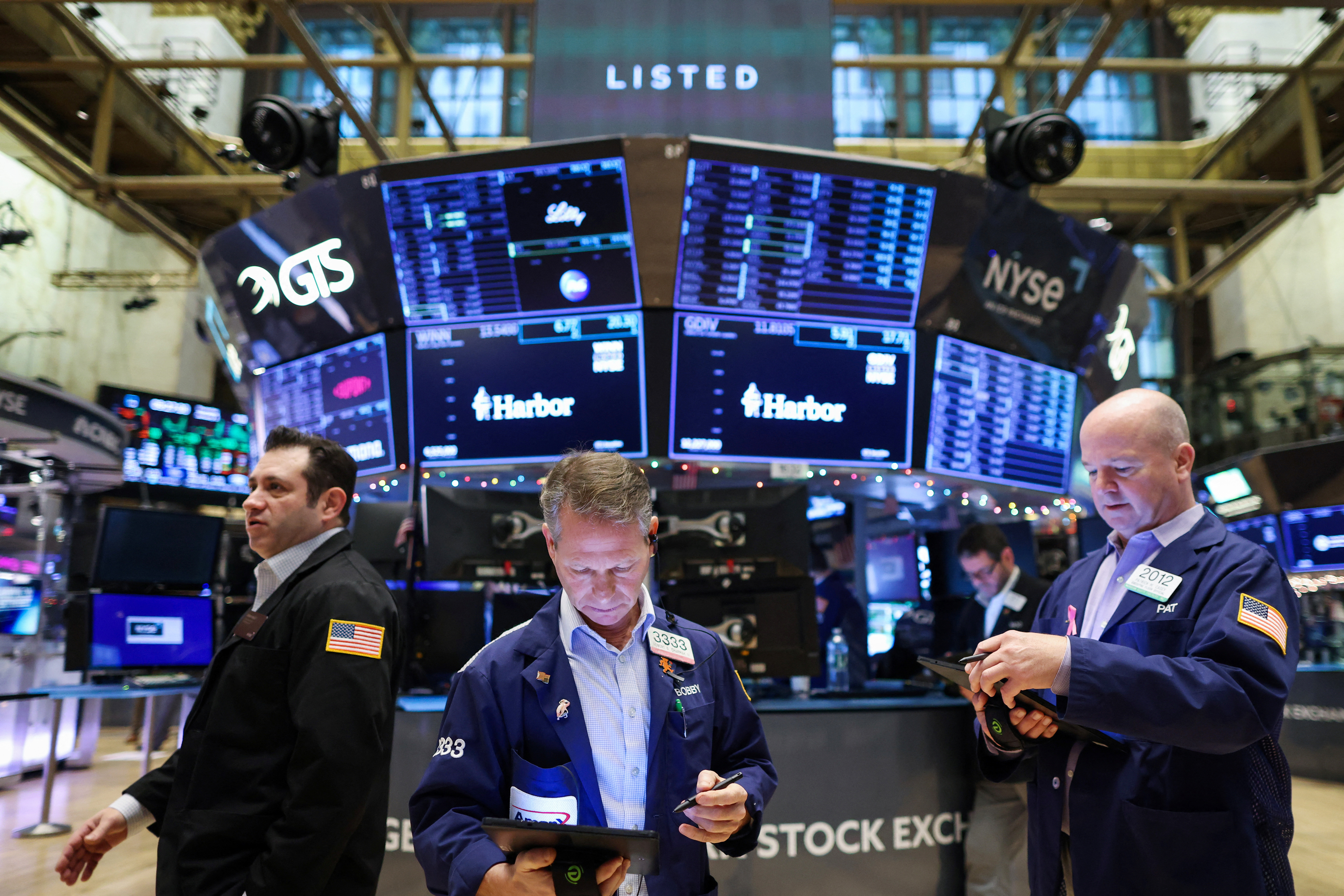MEXICO CITY (AP) — One of the most important diplomatic decisions by President Joe Biden at the gathering this week of North American leaders might have been his choice of airport.
Biden arrived in Mexico City on Sunday via Mexico’s newest hub, the Felipe Angeles International Airport, a prized project by Mexican President Andrés Manuel López Obrador. The hub was christened last year with much fanfare, though it’s more than an hour’s drive north of the city center, has few flights and until recently lacked consistent drinking water.
Biden and López Obrador, whose relationship is transactional at best and absent the warmth and camaraderie Biden has with other world leaders, shook hands and walked together down a long red carpet on the tarmac, flanked by soldiers. The two then took the long drive into the city center together.
Along with Canadian Prime Minister Justin Trudeau, who arrives on Monday, the trio will spend the next two days discussing migration, climate change, manufacturing, trade, the economy and the potential global clout of a more collaborative North America.
“This gathering will deepen our coordination and advance our shared priorities for North America,” Biden tweeted.
Before the summit, Biden announced a major U.S.-Mexico border policy shift, with Mexico’s blessing. The U.S. will send 30,000 migrants per month from four other countries back across the border — from among those who entered the U.S. illegally. For those who entered legally, the U.S. will accept 30,000 people per month from those four countries — Cuba, Nicaragua, Haiti and Venezuela — for two years and offer the ability to work legally.
On Sunday, Biden spent four hours in El Paso, Texas, his first trip to the border as president and the longest he’s spent along the U.S-Mexico line. The day was highly controlled and seemed designed to showcase a smooth operation to process migrants entering legally, weed out smuggled contraband and humanely treat those who’ve entered illegally, creating a counter-narrative to Republicans’ claims of a crisis situation equivalent to an open border.
But it was likely do little to quell critics from both sides, including immigrant advocates who accuse the Democratic president of establishing cruel policies not unlike those of his hard-line predecessor, Donald Trump, a Republican.
Biden encountered no migrants except when his motorcade drove alongside the border and about a dozen lined up on the Ciudad Juárez side in Mexico. His visit did not include time at a Border Patrol station, where migrants who cross illegally are arrested and held before their release.
Elsewhere in El Paso where Biden did not visit, hundreds of migrants gathered outside the Sacred Heart Catholic Church, where they’ve been sleeping outdoors and receiving three meals a day from faith groups and other humanitarian organizations.
The group of migrants had several pregnant women, including 26-year-old Karla Sainz, who’s eight months along. She was traveling in a small group that included her 2-year-old son, Joshua. Sainz left her three other children back home in Venezuela with her mother.
“I would ask President Biden to help me with a permission or something so we can work and continue,” she said.
Noengris Garcia, also eight months pregnant, was traveling with her husband, her teenage son and the family dog from the tiny state of Portuguesa, Venezuela, where she operated a food stall.
“We don’t want to be given money or a house,” said Garcia, 39. “We just want to work.”
Asked what he’s learned by seeing the border firsthand and speaking with the officers who work along it, Biden said: “They need a lot of resources. We’re going to get it for them.”
The number of migrants crossing the U.S.-Mexico border has risen dramatically during Biden’s first two years in office. There were more than 2.38 million stops during the year that ended Sept. 30, the first time the number topped 2 million. The administration has struggled to clamp down on crossings, reluctant to take measures that would resemble those of Trump’s administration.
From Texas, Biden headed south to Mexico City. López Obrador will formally welcome Biden at the Palacio Nacional on Monday, the first time since 2014 Mexico has hosted a U.S. president. The two will meet before Trudeau joins them for dinner. Biden and Trudeau will hold talks Tuesday, and then the three will gather for discussions.
For the U.S., the major talking points are migration, drug trafficking and building on Biden’s push on electric vehicles and manufacturing. Mexico is focused on economic integration for North America, supporting the poor in the Americas and regional relationships that put all governments on equal footing. Canada is looking to expand on green initiatives.
While the three nations work together, it’s not all rosy. The leaders of Canada and Mexico have voiced concerns over Biden’s “Buy American” plan. And while Biden’s push toward electric vehicles is a boon to both nations because of the tax credits for North American batteries, there’s concern the U.S. allies will be left behind.
Meantime, the U.S. and Canada accuse López Obrador of trying to favor Mexico’s state-owned utility over power plants built by foreign and private investors, something that’s forbidden under the three countries’ free trade pact.
Biden’s relationship with Trudeau is warmer, but he still hasn’t made it to Canada during his presidency, despite White House officials saying for months he planned to head north following a gathering in Los Angeles last fall.
López Obrador skipped that gathering because Biden didn’t invite the authoritarian regimes of Cuba, Venezuela and Nicaragua. He’s also made no secret of his admiration for Trump. And he was one of only three world leaders who didn’t recognize Biden’s election victory until after the formal Electoral College vote and the Jan. 6 insurrection at the U.S. Capitol. But despite this, they each recognize the other’s importance.
“They are both consummate politicians,” Andrew Selee, head of the immigration think tank Migration Policy Institute in Washington, said of Biden and López Obrador. “They’re looking for what the other person needs, and they’re trying to make clear what they need. It’s very transactional. There isn’t a big vision for the relationship right now.”
For Biden, that meant flying into the new airport, one of four keystone projects López Obrador is racing to finish before his term ends next year, as Mexico doesn’t allow reelection. The other projects are an oil refinery, a tourist train in the Yucatan Peninsula and a train linking Gulf coast and Pacific seaports.
The airport was expected to cost $4.1 billion and was built after López Obrador canceled the partly constructed airport created by his predecessor. During construction of Felipe Angeles in 2020, hundreds of mammoth skeletons were uncovered.
___
Associated Press writers Andres Leighton in El Paso, Texas; Anita Snow in Phoenix; Morgan Lee in Santa Fe, New Mexico; and Josh Boak in Washington contributed to this report.





